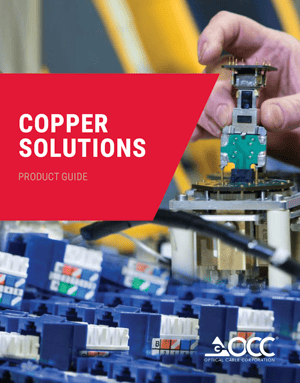 HD video streaming, the Internet of Things (IoT) and ever-increasing wireless access point (WAP) speeds continue to drive demand for greater network speed. The latest 802.11 access point backhaul speeds have significantly exceeded Gigabit Ethernet and are now approaching 10Gbps. Since these devices require one or more network cables between the access point and controller, the following should be carefully considered before your next WAP deployment:
HD video streaming, the Internet of Things (IoT) and ever-increasing wireless access point (WAP) speeds continue to drive demand for greater network speed. The latest 802.11 access point backhaul speeds have significantly exceeded Gigabit Ethernet and are now approaching 10Gbps. Since these devices require one or more network cables between the access point and controller, the following should be carefully considered before your next WAP deployment:
Does the network cable support current/future access point backhaul speed?
- IEEE 802.3bz 2.5/5Gbps Ethernet was introduced in 2016 to provide greater backhaul capacity for the latest generation access points over existing installations of Category 5e/6 cabling.
- CAT 5e and CAT 6 standards do not include any alien crosstalk requirements; therefore both cabling types may not meet the required alien crosstalk performance for these applications. The Telecommunications Industry Association (TIA) published TSB-5021 to provide recommendations to further characterize already installed cat5e and cat6 cabling for support of 2.5/5GBASE-T applications.
- TIA document TSB-162-A, Telecommunications Cabling Guidelines for Wireless Access Points, states that cabling for wireless access points should be Category 6A or higher. Category 6A and higher cabling systems support 2.5GBASE-T, 5GBASE-T, and 10GBASE-T and do not require further characterization.
Does the network cable support the latest PoE standard?
- Current generation IEEE 802.3at Power over Ethernet (PoE) which provides the capability to delivery 25.5 watts over 100 meter cabling infrastructure to endpoint devices can no longer provide the required power for many access points in the market today.
- The latest IEEE 802.3bt PoE standard was approved in September 2018 and supports up to 71 watts to powered devices over 4-pair category cabling at distances up to 100 meters. In addition, up to 100 watts of power may be delivered over shorter distances. The impact of the additional power and resulting temperature rise of the copper cable must be considered, especially in regards to the number of bundled cables.
Does my warranty cover modular plug terminated links?
- Field terminated modular plugs, which replace the equipment outlet and patch cord are commonly used for direct attachment of access points to the network, also known as modular plug terminated links. Modular Plug Terminated Links were formally recognized in the latest ANSI/TIA-568.2-D standard approved in September 2018 and are now supported by field test instruments.
OCC’s Category 6A Solution fully supports 10G performance and enhanced power delivery as defined in the latest PoE standards by mitigating alien crosstalk and temperature issues that come with running large amounts of cables for high bandwidth/high power applications. In addition, OCC provides CAT 5e, CAT 6 and CAT 6A unshielded and shielded solutions for traditional link and channel or modular plug terminated links fully backed by a 25-year performance warranty. For more information, see OCC’s copper solutions product guide.


.png?width=58&height=58&name=X_logo_2023_(white).png)
